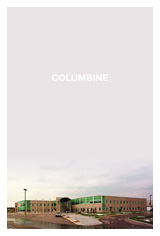Sign up for the daily CJR newsletter.
Columbine By Dave Cullen | Twelve | 403 pages, $26.99
Ten years ago, two Colorado high school students nudged the name Columbine into general circulation as they massacred students, staff, and faculty, then shot themselves. Naturally, a horde of journalists gravitated to the scene of the crime, a small town outside Denver. Reports from Columbine, including those by a Colorado freelance journalist named Dave Cullen, reached into the most remote American locales.
 Eventually, the interest of most journalists in what really happened at the high school waned. Cullen remained interested. He spent years reporting on the massacre, the follow-up by law-enforcement agencies, and the lives of mass murderers Eric Harris and Dylan Klebold. Most of all, he took pains to separate the myths about April 20, 1999 from the truth.
Eventually, the interest of most journalists in what really happened at the high school waned. Cullen remained interested. He spent years reporting on the massacre, the follow-up by law-enforcement agencies, and the lives of mass murderers Eric Harris and Dylan Klebold. Most of all, he took pains to separate the myths about April 20, 1999 from the truth.
Now Cullen has published Columbine (Twelve). This superb work of investigation looks to be a definitive account. Unfortunately for the craft of journalism, it is also a searing indictment of almost all the reporters and editors involved in the coverage–the author included. Columbine, it should be said, is not intended primarily as a book of media criticism. The critique is so pervasive, however, that no reader can overlook it.
Most journalists portrayed the slaughter along identical lines. On a whim, went this scenario, two outcast teenagers carried guns to their high school and started shooting, aiming at the jocks who had tormented them but killing others along the way. This bloodbath was the ultimate revenge of the so-called “Trench Coat Mafia,” a Goth splinter group with an affinity for automatic weapons. As Cullen notes, reporters “filtered every new development through that lens.”
The reality is far different. Although quirky, neither Harris nor Klebold was an outcast. They came from loving, two-parent families. They inhabited nice homes in pleasant neighborhoods. They made friends, worked part-time jobs, earned high grades in their classes, planned to attend college, and harbored no special animus against jocks. The killers, contrary to media coverage, were not part of the Trench Coat Mafia, were not Goths, did not celebrate Adolf Hitler’s birthday, and were not born-again Christians.
Nor did the attack stem from a whim. Harris, the primary predator who more or less gave Klebold his orders, had been planning mass murder at the high school for years. He left behind detailed documentation, which he meant to be discovered. Most journalists never reported that horrifying reality.
In fact, most journalists failed to grasp that Harris and Klebold had devised a plan far more deadly than anything they could have accomplished with their arsenal of automatic weapons. They had built propane bombs–fifty-pound explosive devices concealed in duffel bugs, which they planted around the building, undetected, in the middle of a busy school day. If the bombs had detonated as planned, the school building would have collapsed, crushing hundreds and possibly thousands of individuals. The two teenagers were planning a mass murder far surpassing the number of fatalities at the Murrah Federal Building in Oklahoma City.
Law-enforcement investigators often make errors in judgment and reach mistaken conclusions. Yet they understood immediately the implications of the propane bombs. Why, then, did countless experienced journalists fail readers, viewers, and listeners on that vital element of the story? Not even Cullen can truly explain this failure. Yet he’s quite clear on how the process worked: due to incomplete and otherwise careless reporting, most journalists formed their frame of reference for the story early, then screened out contradictory evidence. The lesson for working journalists is obvious, but often remains undigested.
Reporters, take heart. At least one news outlet got it right. “The first print story arrived in an extra edition of the Rocky Mountain News,” Cullen notes. “It went to press at three o’clock on Tuesday afternoon, before the bodies in the library were found. The Rocky‘s 900-word summary of the massacre was an extraordinary piece of journalism–gripping, empathetic, and astonishingly accurate. It nailed the details and the big picture: two ruthless killers picking off students indiscriminately. It was the first story published that spring to get the essence of the attack right–and one of the last.” (Alas, this exemplar of scrupulous reporting went out of business on Friday, February 27, just a few weeks before Columbine hit the shelves.)
Throughout his narrative, Cullen names names of news organizations and individuals who got the story wrong (and those who came close to getting it right). Reading the book carefully for these darts and laurels would constitute a rewarding exercise for any journalist. Beyond that worthy if gossipy exercise, the author’s investigative reporting techniques are on abundant display, not only in the text but in the forty pages of endnotes and bibliography. Columbine promises to be a classic of in-depth journalism–with, again, some sobering evidence of how widely journalists can miss the mark.
Has America ever needed a media defender more than now? Help us by joining CJR today.






